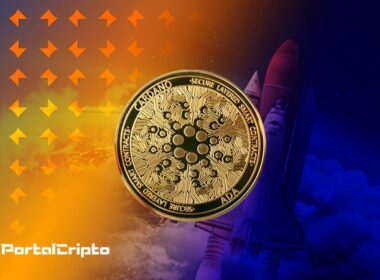Definition of L Band
The L band is an frequency range in the radio spectrum ranging from 1 to 2 gigahertz (GHz). It is designated by the Institute of Electrical and Electronics Engineers (IEEE) as the ultra-high frequency (UHF) frequency range at the top of the range, and at the beginning of the microwave range. L-Band is used by a variety of applications, including global positioning systems (GPS), radar, telecommunications, aircraft surveillance, and radio.
The wavelength of the L Band is 30 to 15 centimeters. It is one of the main operating ranges used by many applications, thanks to its ability to provide a balance between bandwidth and signal penetration through obstacles. L-Band is particularly useful for satellite telecommunications applications, as it can transmit signals through clouds and rain with less attenuation than other frequency bands.
The acronym “L” has no specific meaning, and is simply a letter assigned by the IEEE to designate the frequency range. It is important to note that the L-Band should not be confused with the “L-Band” used in radio astronomy, which is a different frequency band ranging from 1 to 2.5 GHz.
L Band Applications
The L Band is a band of frequencies in the electromagnetic spectrum that comprises the range from 1 GHz to 2 GHz. It is used in various applications such as:
- Telecommunications: L-Band is used in mobile communication systems such as cell phones and wireless devices. It is especially useful in densely populated urban areas where other frequency bands may experience interference.
- Satellites: L-Band is used in satellite communications, including data transmission, television and telephony. The sub-band from 950 MHz to 1450 MHz is particularly important for these applications.
- Radar: L-Band is used in long-range radar and aircraft surveillance systems. She is able to penetrate the atmosphere and detect objects at great distances.
- Global positioning systems: L-Band is used in global positioning systems such as GPS. It is capable of providing positioning accuracy of up to a few meters.
- Radio astronomy: the L Band is used in astronomical observations, especially for studying the cosmic microwave background radiation.
In general, the L-Band is a versatile frequency band that is widely used in a variety of applications. It is particularly useful in mobile and satellite communication systems, as well as in radar and global positioning systems.
Comparison with Other Bands
The L-band is one of many frequency bands used in communication and technology applications. Some of the other common bands include the S, C, X, Ku and Ka band. Each band has its own advantages and disadvantages, and it's important to compare them to better understand how the L-band fits into the overall spectrum.
The S band is a higher frequency band than the L band, ranging from 2 to 4 GHz. It is often used in radar and satellite communication applications, as well as some military applications. S-band has a higher bandwidth than L-band, which makes it more suitable for applications that require high-speed data transmission.
The C band is a lower frequency band than the L band, ranging from 4 to 8 GHz. It is often used in radar, satellite communication and satellite television applications. C-band has a higher bandwidth than L-band, which makes it more suitable for applications that require high-speed data transmission.
The X band is a higher frequency band than the L band, ranging from 8 to 12 GHz. It is often used in radar, satellite communication and satellite television applications. The X-band has a higher bandwidth than the L-band, which makes it more suitable for applications that require high-speed data transmission.
The Ku band is a higher frequency band than the L band, ranging from 12 to 18 GHz. It is often used in satellite communication applications as well as some military applications. Ku-band has a higher bandwidth than L-band, which makes it more suitable for applications that require high-speed data transmission.
The Ka band is a higher frequency band than the L band, ranging from 26 to 40 GHz. It is often used in satellite communication applications as well as some military applications. Ka-band has a higher bandwidth than L-band, which makes it more suitable for applications that require high-speed data transmission.
Compared to other bands, the L-band has a relatively narrow bandwidth. However, the L band is less susceptible to interference than other higher frequency bands, which makes it more suitable for applications that demand greater reliability. Furthermore, the L band is able to penetrate obstacles such as walls and trees better than other higher frequency bands, which makes it more suitable for applications in urban and forest environments.
Use in the Global Positioning System
The Global Positioning System (GPS) is a satellite navigation service that provides accurate positioning, navigation, and timing information. It is widely used around the world in a variety of applications from vehicle navigation to wildlife monitoring.
The use of GPS in the L Band is particularly important as this is the frequency band where GPS navigation signals are transmitted. The L Band frequency is 1 to 2 GHz, with a wavelength of 30 to 15 cm. This frequency is considered ideal for transmitting GPS signals as it is less susceptible to interference than other frequency ranges.
GPS uses a network of satellites in orbit around the Earth to transmit navigation signals to receivers on the ground. These signals are used to determine an object's position, speed, and direction. GPS is used in a wide variety of applications, from vehicle navigation to wildlife monitoring.
The use of GPS in L Band is particularly important for applications that require high accuracy and reliability. For example, GPS is used in aircraft for navigation and air traffic control. It is also used in vehicle navigation systems such as satellite navigation systems in cars and trucks.
Use on Mobile Phones
The L band is one of the frequency bands used in mobile phones. This frequency range allows for better signal penetration in closed and densely populated environments, such as buildings and urban areas. Furthermore, L band signals are less susceptible to interference due to their lower frequency.
Mobile phones using the L band frequency band are capable of providing high quality voice and data services in dense urban environments. Furthermore, the low frequency of L band allows mobile phones to be used in remote areas where other communication services may not be available.
Another important application of the L band in mobile phones is the use in satellite navigation systems such as GPS. L band signals are used to transmit navigation information from satellites to mobile devices, allowing users to obtain accurate location and direction information.






